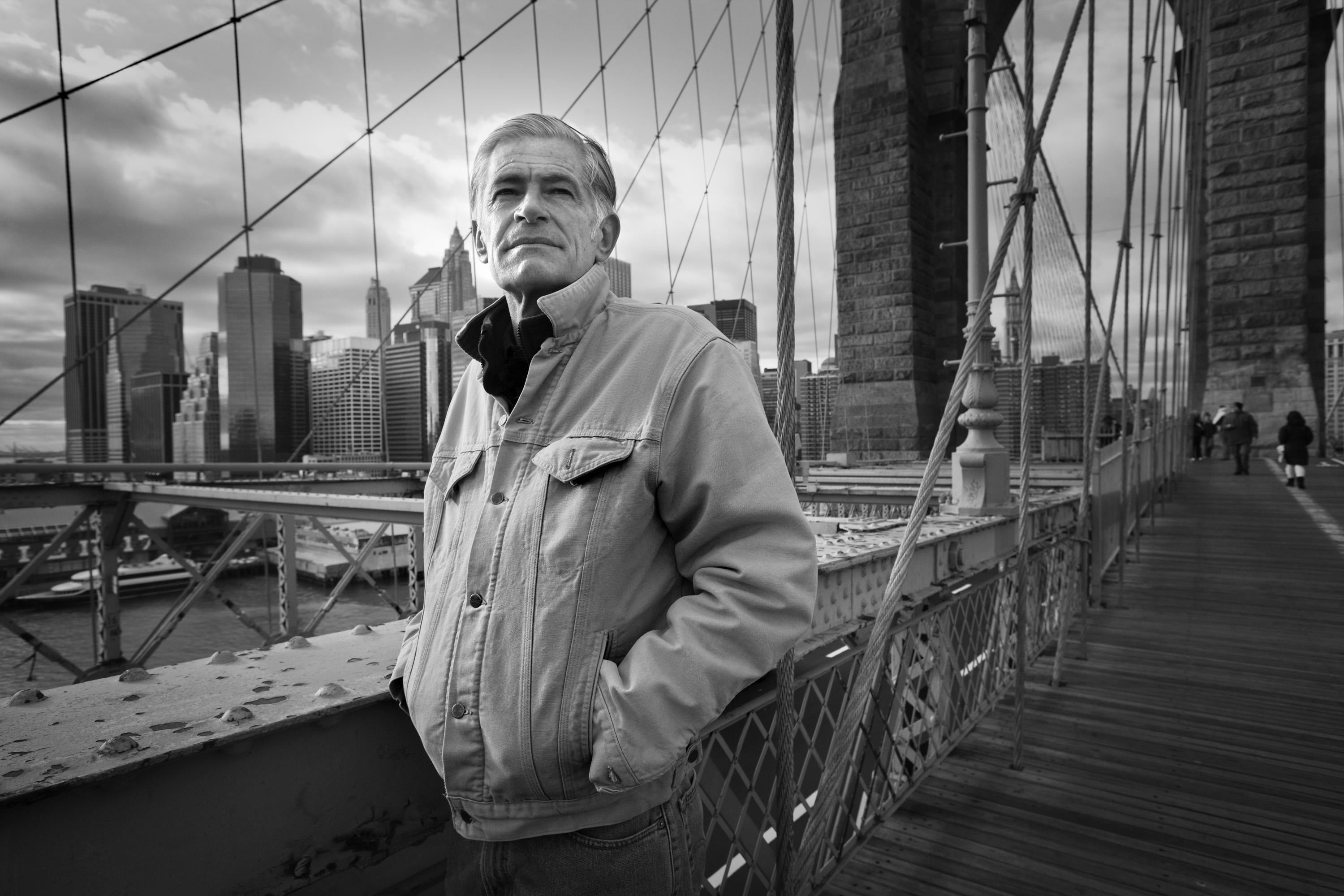
Dan Rather reporting from Vietnam courtesy utexas.edu.
James Nachtwey was born and raised in postwar Massachusetts. He clearly remembers seeing images of the Civil Rights Movement on the television screen and in newspapers and magazines in the 1950's and 1960's. He also remembers the images of slaughter and destruction which resulted from the Vietnam War. It was these pictures which inspired James to become a war photographer.
Nachtwey's image of a Swaziland boy with TB courtesy
In 1976, James officially entered the world of photography. By 1984, he was hired by TIME magazine. He had solo exhibits in New York, Paris and Rome. By the 1990's, he was covering stories in Afghanistan, Romania, Bosnia, Kosovo, Rwanda, South Africa and India.

The South Tower shortly after being hit.
It was on September 11, 2001, that he found himself back in his home country. He was in the Big Apple on assignment. Little did he know that his assignment was about to change. On a sunny day where the sky was completely blue, so blue that pilots called it "severe clear", he sat down by the Brooklyn Bridge sipping his coffee. Suddenly, his gaze was drawn to New York skyline, specifically the World Trade Center towers, where the South Tower was billowing smoke.

The South Tower collapses on St. Peter's Church.
With his background on the battlefield, James knew this was an act of war. He raced into the city, his camera slung over his shoulder, passing people covered in white dust running in the opposite direction. He found himself at the base of the North Tower, when he heard it start to collapse. If he didn't act fast, it would be sudden death. He scanned the area, spotted an open door, and lunged for it. Inside the building, the Millenium hotel, he dove into an elevator as the North Tower came crashing down.

Survivors escaping from Ground Zero.
Once the debris settled, James, still in one piece, crawled out of the wreckage. He realized he was outside when he saw blinking lights, the lights of police cruisers. He headed north for a few minutes, but then decided, as a photographer, it was his duty to return to the scene of the accident. As he walked the streets, he was struck by "the unreality, the horror, the futility, the insane, evil brilliance of the attack".

The twisted remains of the World Trade Center.
Unlike in a war zone, where one could rescue people, there were no bodies: everyone was buried under the rubble. He made it back to Ground Zero, frantically snapping pictures with his 27 rolls of film. Images of the twisted metal, the white dust, the frantic firefighters, the helpless bystanders, the crumbled buildings, filled his camera lens.

Firefighters frantically trying to contain the blaze.
James let his photographs bear witness to the events on 9/11. He chose 14 of his photographs to post on Time.Com. Within one day, the site had 2 million hits. Ten years later, James looked again at his 9/11 photographs. He was struck by the "overwhelming sense of loss".

Another surreal image from 9/11.
James has gone on to receive almost every award known in photography including the Henry Luce Award (from Life magazine) and the Martin Luther King Award. He was chosen the Best Magazine Photographer seven times and is considered by many to be the greatest war photographer of our time.

A man searches for survivors on a wall near Ground Zero.
Note: 9/11 photographs courtesy Time.Com.

James Nachtwey on the Brooklybn Bridge courtesy wordpress.com.
No comments:
Post a Comment